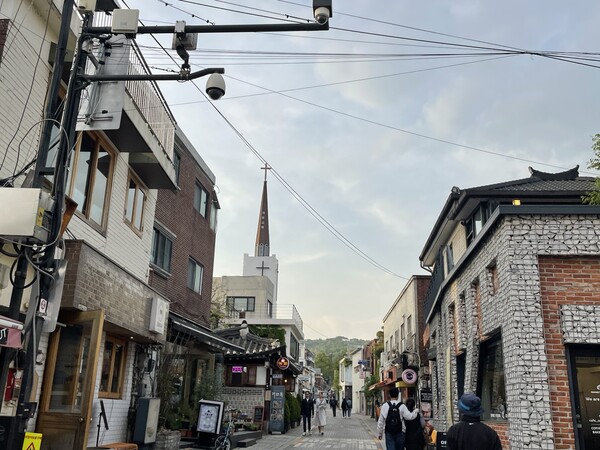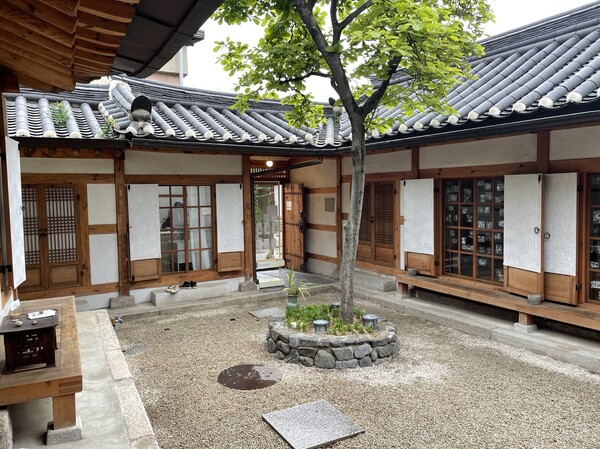Jongno, the center of Korea’s capital city Seoul, deeply embodies the nation’s rich history and tradition. It is also a familiar home ground for many Kingos, as the founding of Sungkyunkwan was in Jongno. So, to welcome the end of the first semester, how about joining the Sungkyun Times (SKT) to discover the hidden gems of Jongno? The district under the beaming sunlight and the blissful sky will make the start of this summer worth remembering.
The Heart of Seoul
-Welcome to Jongno!
Jongno, a district located in the central area of Seoul, is widely loved for its charming encapsulation of both the past and the present. Its name derived from Jongru, a pavilion used to hang a bell that announced the opening and closing of Hanyang’s city gate during the Joseon Dynasty. The origin of its name shows that the district holds a profound historical significance. As King Taejo developed the royal foundation of Joseon on Jongno, there are various historical sites such as Gyeongbokgung Palace and Sungkyunkwan. Furthermore, the political significance lies in the district as the Constitutional Court and the Blue House stand there. In addition, Jongno is a district with remarkable natural scenery. Naksan Mountain to the east and Inwangsan Mountain to the west, with the Cheonggyecheon Stream flowing through the middle, a unique natural setting of Jongno is completed. With such various charms, the district welcomes millions of visitors each year. Apart from the famous landmarks commonly known, to enjoy Jongno to its fullest, the hidden treasures are worth searching for.
-How to Visit Hwanghakjeong
Kingos from the Humanities and Social Sciences Campus (HSSC) can take the bus No. 272 at Myeongnyun 3-ga Sungkyunkwan Univ. Entrance bus stop (01003). Get off at Sajikdan Seoul Children’s Library bus stop (01113) and walk for around nine minutes to arrive at Hwanghakjeong. Kingos leaving from the Natural Sciences Campus (NSC) can take Line 1 at Sungkyunkwan University Station and get off at Jonggak Station. Then, leave from Exit 1 and walk for around five minutes to arrive at the Jongno 1-ga bus stop (01763). Take the bus No. 606 and get off at Sajikdan Seoul Children’s Library bus stop (01113). The rest of the directions are identical from there.
History within Nature, Inwangsan Mountain
-The Valor of Joseon
Hwanghakjeong is an open archery pavilion built in 1899 by King Gojong of Joseon to promote traditional Korean archery. As the only remaining traditional archery field, Hwanghakjeong also runs a Korean Archery Gallery. From a crossbow that powerfully shoots with a fixation tool to Singijeon, a rocket-type arrow weapon, Kingos can observe various traditional bows in this gallery. Hwanghakjeong also provides tourists with a bow-crafting session and an archery practice program to popularize Korean archery. Through the \25,000 crafting program, Kingos can observe the exceptional quality of traditional Korean bows by making bamboo bows themselves. Meanwhile, the archery practice program that costs \4,000 allows Kingos to train the mind and body like Korean ancestors and feel the courageous spirit of Joseon when shooting every arrow. Take a deep breath after sweating through an exciting archery session, and the comforting nature surrounding the pavilion will be presented to Kingos. Eight Views of Hwanghakjeong, a poem that chants the beautiful, soothing view around the archery field, is carved on a stone at the back of the pavilion. Next to the stone, Kingos can enjoy a peaceful moment amidst the dull daily life through the harmonious scenery of Hwanghakjeong and Inwangsan Mountain.


-Poetic Scenery of Cheongun Park

Past the Hwanghakjeong, walk deep inside the Inwangsan Mountain Trail, and you will find Cheongun Park. Because of its quiet walking path and the green landscape of Inwangsan Mountain, the park is loved by both residents and tourists. Kingos can take a quiet stroll in the forest’s fresh air until they reach Poet Yoon Dongju’s Hill. The hill got its name because the poet was known for visiting Inwangsan Mountain to gain inspiration for his work. Walking up the wooden stairs next to the hill, Kingos will find his most famous poem, Prelude, engraved on a stone monument. The landscape of Seoul under the mound, which the poet would have cherished, unfolds for the tourists to admire its serene view. Then, Kingos can slowly walk along the trail until the wonderful sight of a traditional Korean building stops their feet. It is the Cheongun Literature Library, the first Hanok public library of Jongno. The SKT recommends choosing a book from the archive room and grabbing a seat inside the Hanok to enjoy the relaxing atmosphere. Sitting on the wooden veranda of the Hanok will gift Kingos a relishing view of the viridescent mountains and faraway skyscrapers. Next to the Hanok, an artificial waterfall and a small pavilion are located. The SKT recommends Kingos sit on the pavilion and read books to savor the harmony of nature and literature, as the sound of the waterfall will play out as soft background music.


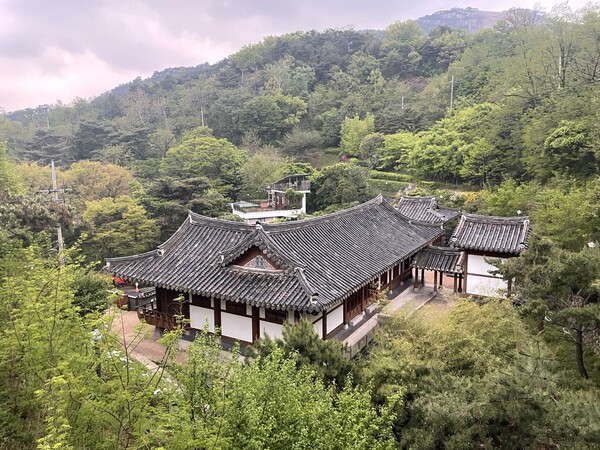
Art within Life, Anguk
-Into the History of Our Craft
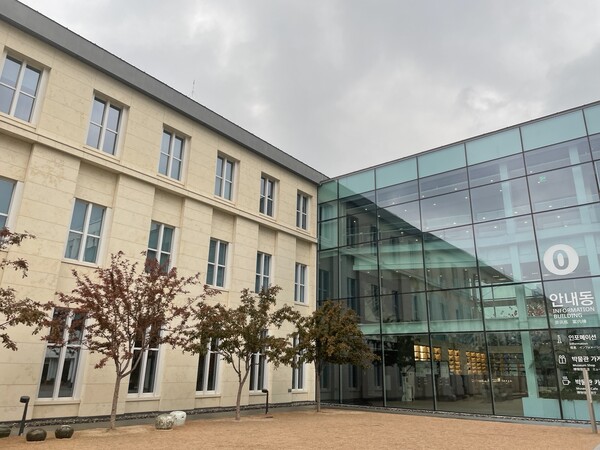

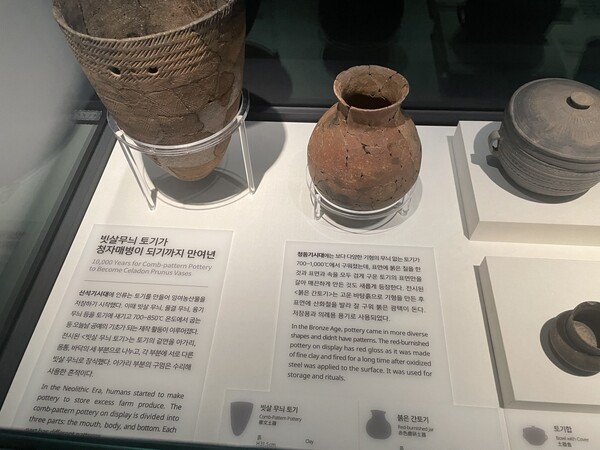
After leaving Cheongun Park, take bus No. 1020 at Jahamun Pass Poet Yoon Dong-ju’s Hill bus stop and arrive at Angukdong. Anguk is where the reminiscence of the past and the modern aesthetic of the present coexist. Among the many tourist attractions in Anguk, the SKT introduces the first national craft museum, the Seoul Museum of Craft Art. This museum welcomes visitors from 10 a.m. to 6 p.m. daily and showcases programs with diverse exhibitions. Among them, the Exhibition of History of Craft Art on the second floor of Exhibition Buildings 1 and 2 is the most symbolic. It is a permanent exhibition that introduces the history of craft art from its beginning with natural elements to the industrialization of art after the Japanese colonial period. Apart from such displays, the museum also offers special exhibitions. Until July 23rd, drafts of Najeonchilgi, traditional craft art made with colorful shellfish laid on wooden furniture, are exhibited. After seeing the exhibitions, try walking out of the building and admiring its architectural beauty. The L-shaped architecture stands on a broad grass field, and the sunlight reflects on the glistening glass. Such view will make Kingos’ walk out of the museum an enchanting experience.
-A Delightful Maze in Gyedong-gil

In Anguk, an entertaining street named Gyedonggil is unfolded and captures the visitors’ hearts with the history and culture of the past. Start walking north from Exit 3 of Anguk station, and stores that bring back past memories will greet Kingos. A sesame oil shop with a sign from the 1980s and a black-and-white photo studio that radiates a familiar and nostalgic mood can be found. Also, the Hanok-style stores create a unique accordance with the modern buildings, contributing to Gyedong-gil’s distinctive atmosphere. Café Onion, for example, is a Hanokstyle coffee shop that welcomes exhausted guests to enjoy snacks and drinks in a traditional setting. A bite of chocolate cheese brownies and a sip of a Chestnut Iced Latte will leave a sweet and savory comma between Kingos’ hot summer walk. After the short break, the SKT suggests embarking on a small adventure by choosing narrow, curvy paths instead of the broad, straight main road. Because then, an unexpected joy hidden in Gyedong-gil will surprise Kingos. In the middle of those narrow paths, Bae Ryeom’s House, a public Hanok where the Korean traditional painter Bae Ryeom spent his life, is open to welcome guests all week. Through the gallery that exhibits traditional paintings and the artist’s room that preserves the look of a modern Hanok from the 1950s, one can feel past art traces. Finally, Kingos can complete the little adventure in Anguk with the sight of red flowers and green vines winding along the stone walls of the Hanok buildings.
